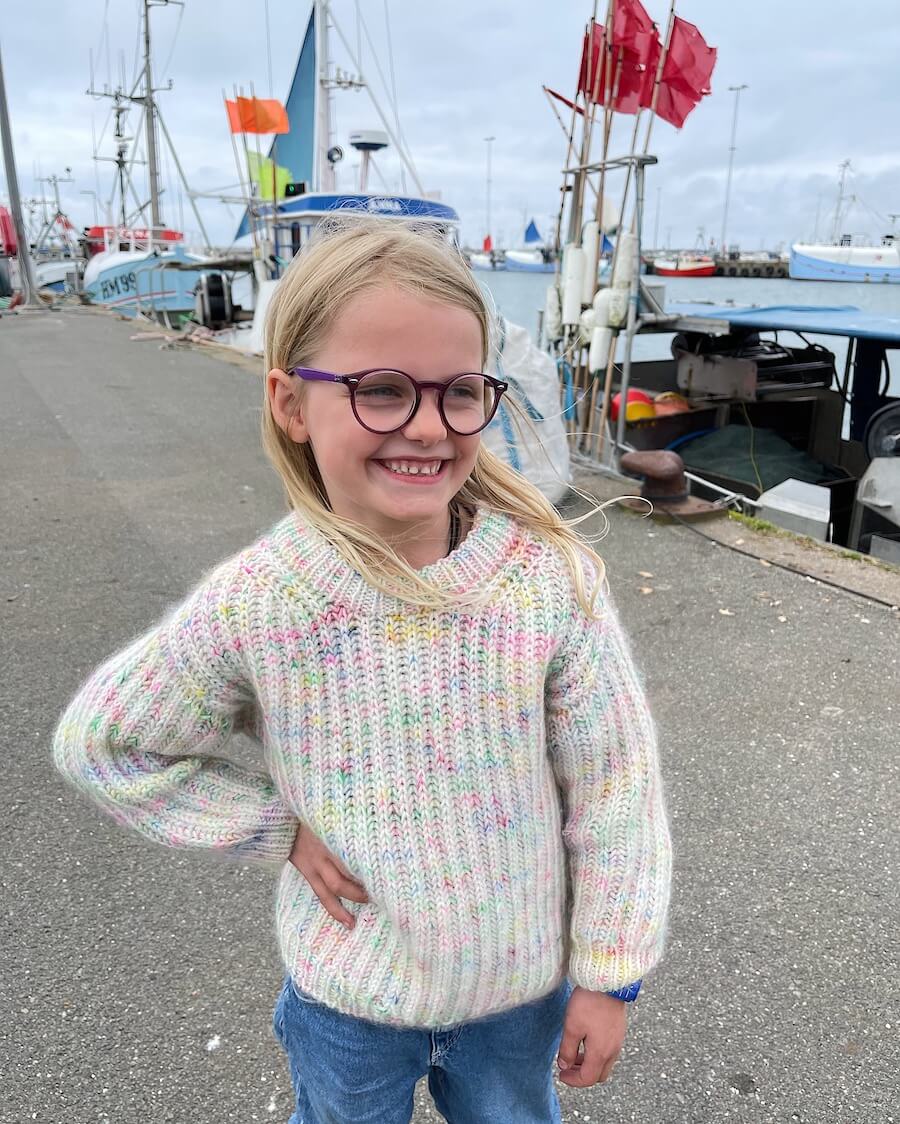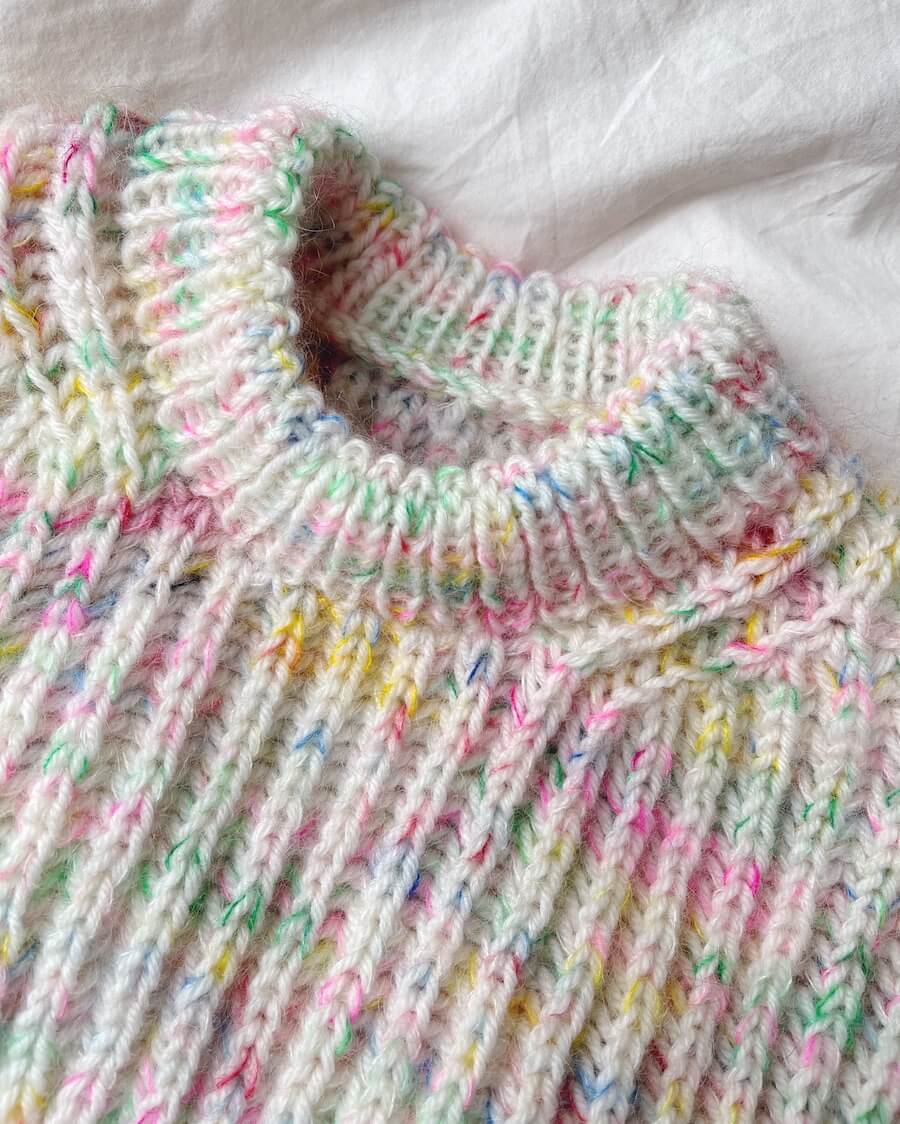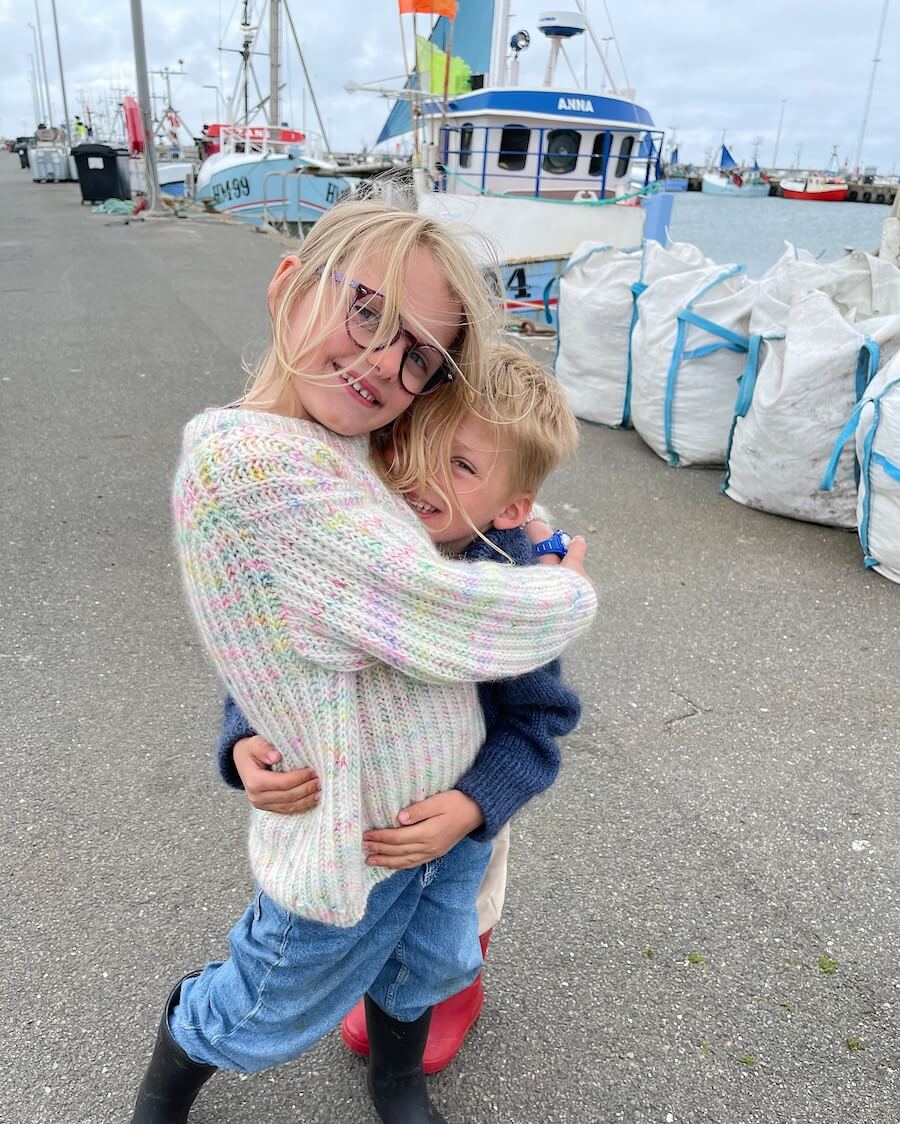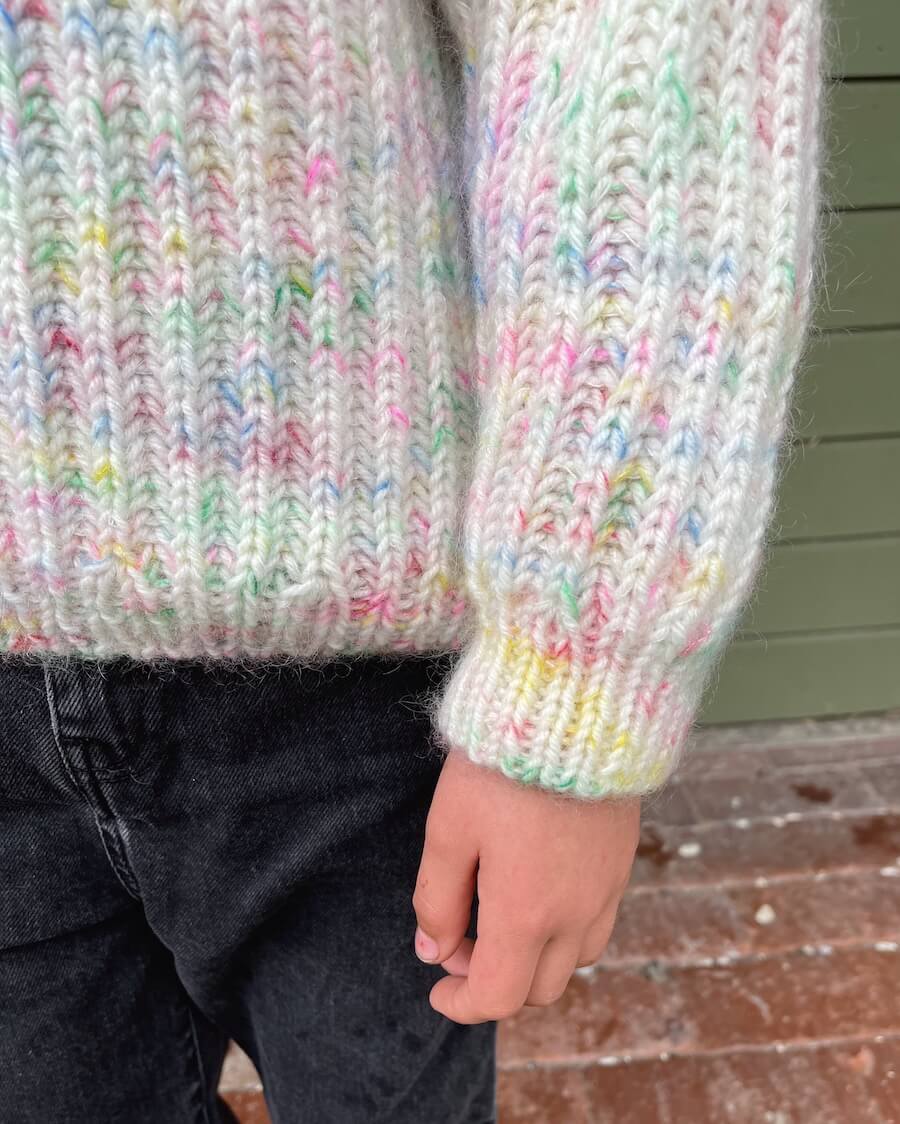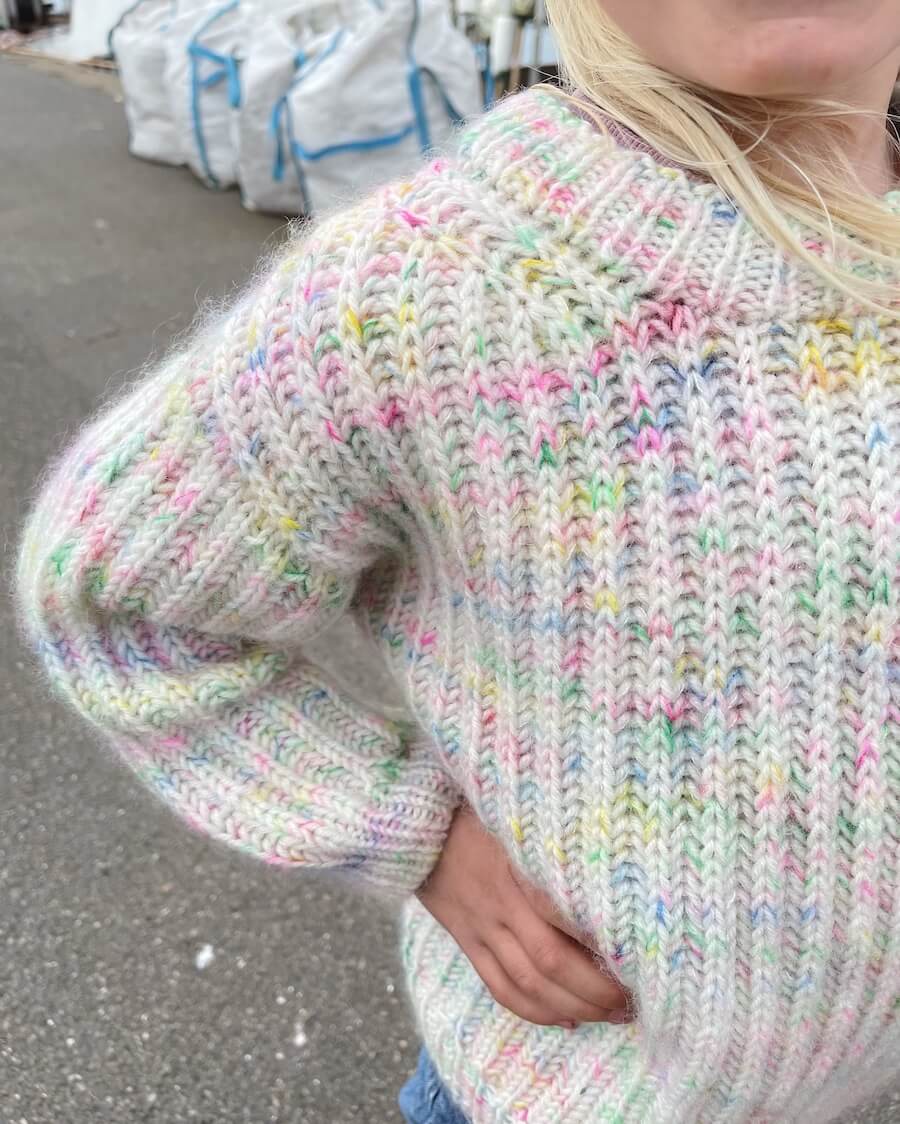PetiteKnit - September Sweater Junior
This is a printed pattern in Swedish. If you only order the pattern and want it sent to you, it will be sent to your mailbox, even if you choose a different shipping option at checkout. If you also order other items, they will be sent to your desired address.
Couldn't load pickup availability
This is a printed pattern in Swedish.
September Sweater Junior is knitted from the top down in English rib. First, the back is knitted by casting on stitches for the neck and working back and forth on the needle with increases on each side. Then, stitches are picked up for the shoulder sections, which are knitted separately, and then brought together at the front when the front piece is knitted. Below the armhole, the back piece and front piece meet to form the torso, which is knitted in the round on a circular needle. Then, stitches are picked up for the sleeves, which are knitted in the round with decreases on a short circular needle. Finally, stitches are picked up in the neckline to knit the ribbed edge of the neck, which is folded double and knitted down. September Sweater Junior is therefore assembly-free.
Do a swatch before you start knitting to find the needle size that gives you the right tension. Be aware that it is difficult to measure English rib knit as it is elastic – so measure all distances several times.
Please note that the English rib knit will stretch slightly in width when washed and worn. Therefore, you can expect your September Sweater Junior to increase in circumference by approximately 4-6 cm in the upper width, in relation to the measurements stated on the front of the pattern.
Sizes: 1-2 (2-3) 3-4 (4-5) 5-6 (6-7) 7-8 (8-10) 10-12 (12-14) years
Width: 70 (73) 77 (77) 80 (83) 87 (93) 93 (97) cm
Length: 36 (37) 39 (40) 41 (43) 44 (46) 49 (52) cm (measured center back incl. ribbed neckline)
Gauge: 12 stitches x 38 rows in English rib on 5 mm needles = 10 x 10 cm (note that 38 rows in English rib count as 19 knit stitches)
Knitting suggestions: Circular needle 5 mm (40, 60 and/or 80 cm), circular needle 4.5 mm (60 or 80 cm), circular needle 3.5 mm (40 cm), double pointed needles 4.5 mm
Materials: 250 (250) 300 (300) 350 (350) 350 (400) 450 (500) g Peer Gynt from Sandnes Garn (50 g = 91 m) (one thread) (here the color Natur 1002 has been used) or Double Sunday from Sandnes Garn (50 g = 108 m) (one strand) knit together with (75) 75 (75) 100 (100) 100 (100) g Thin Silk Mohair from Sandnes Garn (25 g = 212 m) (one strand)
Difficulty level : ★ ★ ★ ★ ★ (5 out of 5).
About difficulty level
About difficulty level
1 ★ – BEGINNER
The patterns in this category are written for the brand new knitter and where you only need to recognize and master the most basic techniques to be able to knit the pattern. The patterns are written in beginner-friendly language with no or very few abbreviations. For many of the patterns, especially the Novice series, there are extra detailed videos that guide you through the different steps in the pattern.
You will encounter the following techniques in the beginner category:
Cross cast-on, knit, purl, twisted knit, decrease, increase, yarn over and regular bind off.
2 ★ ★ – EASY
The patterns in this category are a little more difficult than the beginner patterns but still easy to knit. The patterns are for those who have knitted their first project and are familiar with reading a pattern.
In this category you will encounter abbreviations. Abbreviations that are specific to the pattern will be described. There will be videos that show the techniques that you will use in the pattern.
You will encounter the following techniques in the easy category, in addition to the techniques from the previous category:
Stitching together folded edges, buttonholes, simple structural patterns and picking up stitches.
3 ★ ★ ★ – AVERAGE
The patterns in this category assume that you are experienced and familiar with basic knitting techniques as the patterns contain more difficult techniques such as casting on, picking up stitches and shortened rows. There will be videos showing the techniques you will use in the pattern.
You will encounter the following techniques in the medium category, in addition to the techniques from the previous categories:
Reading a simple chart, Italian cast on, Italian cast off, Judy's Magic Cast On, i-cord, simple double knit, double knit to Italian cast off, German Short Rows, structural patterns, simple assembly, embroidery on knit and multi-color knit.
4 ★ ★ ★ ★– ABOVE AVERAGE
The patterns in this category assume that you are an experienced knitter and can have an overview of a pattern. The patterns may require you to have control over several elements at the same time – such as knitting from a chart and designing at the same time. There will be videos that show the techniques that you will use in the pattern.
You will encounter the following techniques in the above-average category, in addition to the techniques from the previous categories:
Knitting according to a diagram, installing zippers, double knitting and advanced structural knitting such as rib.
5 ★ ★ ★ ★ ★ – DIFFICULT
The patterns in this category assume that you are an experienced knitter who can keep an overview of a pattern and place patterns and designs yourself based on the instructions in the pattern. There will be videos that show the techniques that you will use in the pattern.
You will encounter the following techniques in the difficult category, in addition to the techniques from the previous categories:
Advanced double knitting for e.g. edges, collars and buttonholes, decreases/increases in patterns and shortened rows in structured patterns.

